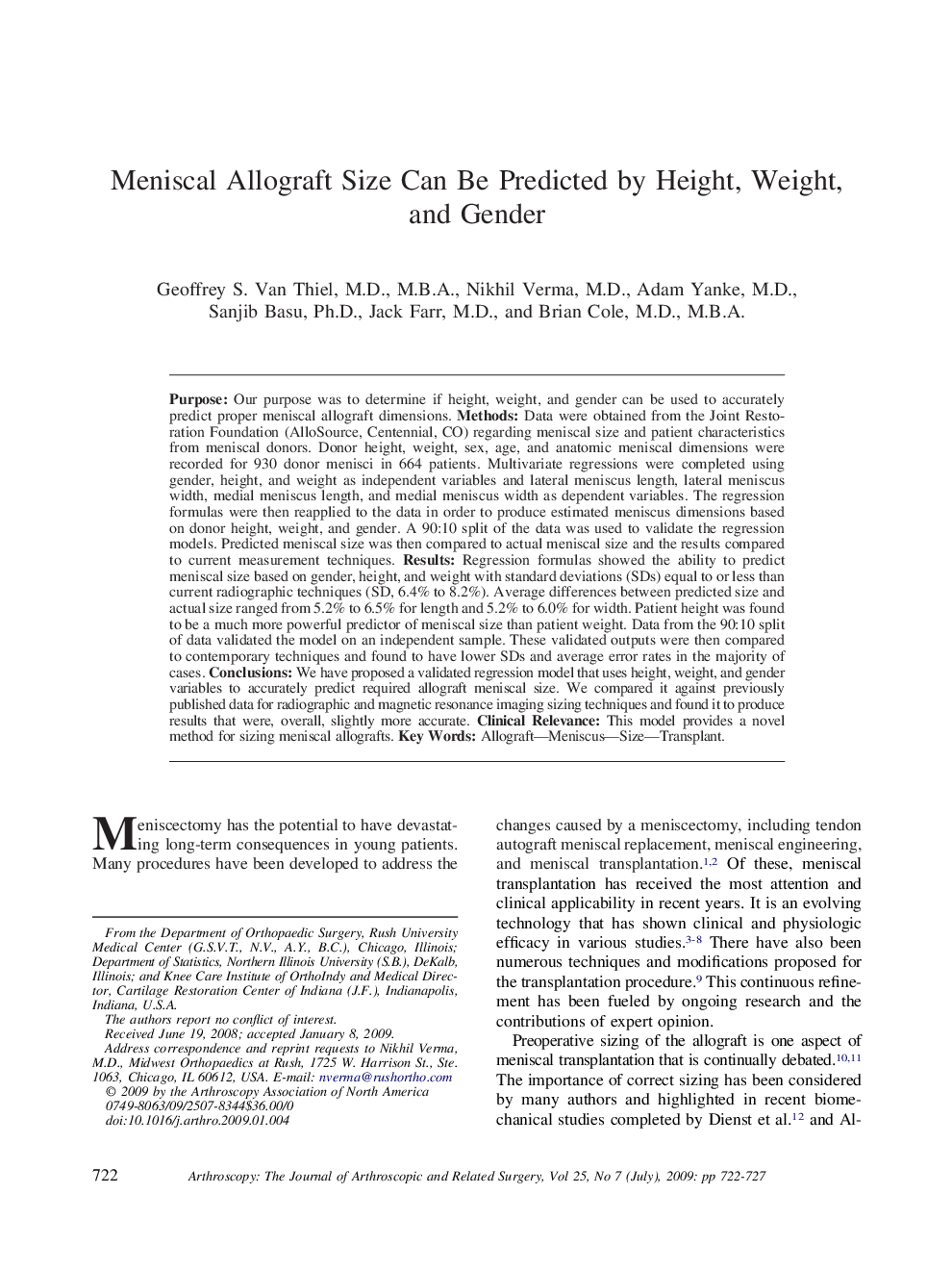| Article ID | Journal | Published Year | Pages | File Type |
|---|---|---|---|---|
| 4045442 | Arthroscopy: The Journal of Arthroscopic & Related Surgery | 2009 | 6 Pages |
PurposeOur purpose was to determine if height, weight, and gender can be used to accurately predict proper meniscal allograft dimensions.MethodsData were obtained from the Joint Restoration Foundation (AlloSource, Centennial, CO) regarding meniscal size and patient characteristics from meniscal donors. Donor height, weight, sex, age, and anatomic meniscal dimensions were recorded for 930 donor menisci in 664 patients. Multivariate regressions were completed using gender, height, and weight as independent variables and lateral meniscus length, lateral meniscus width, medial meniscus length, and medial meniscus width as dependent variables. The regression formulas were then reapplied to the data in order to produce estimated meniscus dimensions based on donor height, weight, and gender. A 90:10 split of the data was used to validate the regression models. Predicted meniscal size was then compared to actual meniscal size and the results compared to current measurement techniques.ResultsRegression formulas showed the ability to predict meniscal size based on gender, height, and weight with standard deviations (SDs) equal to or less than current radiographic techniques (SD, 6.4% to 8.2%). Average differences between predicted size and actual size ranged from 5.2% to 6.5% for length and 5.2% to 6.0% for width. Patient height was found to be a much more powerful predictor of meniscal size than patient weight. Data from the 90:10 split of data validated the model on an independent sample. These validated outputs were then compared to contemporary techniques and found to have lower SDs and average error rates in the majority of cases.ConclusionsWe have proposed a validated regression model that uses height, weight, and gender variables to accurately predict required allograft meniscal size. We compared it against previously published data for radiographic and magnetic resonance imaging sizing techniques and found it to produce results that were, overall, slightly more accurate.Clinical RelevanceThis model provides a novel method for sizing meniscal allografts.
